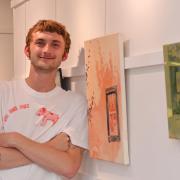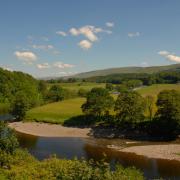I’m not sure I should admit to this, but when Prince Charles and Lady Diana first got engaged in 1981 I was unnaturally excited. I had a crush on Diana with her doleful eyes and sheep-dotted sweaters and decided to keep a scrapbook of all the pictures of her I could find.
My stepfather would kindly bring home a selection of newspapers each evening so that I could dutifully cut out photographs of her and glue them into my scrapbook with the help of a Pritt Stick. Every evening for the five months leading up to the wedding, whilst most boys my age were riding around on Chopper bikes or kicking a football around, I was carefully guiding a pair of scissors around Diana. Her hair wasn’t too tricky – it was quite smooth and round – but those pie-crust shirt collars took patience and skill to navigate.
Forty-three years later, sitting in a paper-cutting workshop in Appleby, I was about to cut out a hare, not hair. And instead of scissors I was brandishing a sharp scalpel. This was likely to be a little more complex than Lady Diana Spencer.

Paper-cutting has become a popular pastime in recent years. You will likely have seen the work of Rob Ryan, one of the country’s leading paper-cutting artists – famed for his cut-outs of folkloric figures and whimsical sayings – on greeting cards and framed posters, or even illustrating the pages of Vogue, and the work of Carol Ann Duffy, the poet laureate.
Paper-cutting as an art form goes way back to sixth century China, soon after Cai Lun invented lightweight paper. Eventually the art was embraced by cultures all over the world.
In Germany they called it scherenschnitte, meaning "scissor cuts", where religious orders used it to create images and texts. In Japan, a version of paper cutting called kirigami was created. The process involved a combination of origami and paper cuts to create 3D forms.
And, of course, in the 1940s and 50s Henri Matisse turned to paper-cutting or “drawing with scissors” as he called it. These pictures can now fetch well over £1m at auction.

Today, work by the country’s leading paper-cutting artists can be seen in galleries across the world and they can command justifiably high prices for their more intricate one-off creations. One member of the paper-cutting elite is the artist Emma Boyes, who now lives in Cumbria, and is leading today’s class at the Eden Workshop at the Appleby Hub.
Emma took up paper-cutting in 2010 and has since created work for private clients and commercial companies, exhibited her work throughout the UK and published many best-selling paper-cutting template kits.
Emma conducts various workshops around Cumbria, most notably here at the Appleby Hub in a former church bang in the centre of the town. If you haven’t been, it’s well worth a visit. The Hub is run by Right2Work, part of the Oaklea Trust, whose mission is to support local communities, teach young people about working in a commercial catering environment (it is home to a large and bustling café) and support numerous other charitable endeavours.
We were not cutting out any old hare in this class: a typical paper cut uses just one sheet of paper, but we were going to cut out various layers using different-sized templates that would all come together to create the appearance of a 3D hare.

Although plasters were at hand, cutting out paper using razor-sharp scalpels isn’t as risky as it might sound. You treat the scalpel as if it was a pencil, imagine when cutting that you are in fact tracing a line, and the process seems safe and seamless. You just need to ensure that your hand remains steady and the blade remains sharp (you may need to replace a blade once or twice during one paper-cut). You can actually buy barrel-shaped scalpels that feel like holding a pencil rather than a blade if you find that easier.
The process of cutting out paper is very therapeutic: you concentrate on it fully (the entire class of five soon fell into focused silence). There is something very satisfying as you see the shapes quickly emerge, and it’s easier than it looks (which is rarely the case in my experience).
Emma says it is a skill you can learn and master quite quickly. You start off with beginner templates, then go to intermediate ones, and then advanced. You can buy her kits from katysuedesigns.com.
The artistic, and trickier, element of paper-cutting is in the designing of the actual templates. You need to work out how they will look, visualise them back to front and, if creating a 3D design, how the individual templates will piece together to form the final picture.

In this workshop you get a head start as Emma provides the templates for you to cut out. This class is really about learning and finessing your cutting skills and understanding the process – from template to framing – that goes into creating a finished piece.
You may want to create an artwork to hang framed on your wall or, as is hugely popular now, to turn into your own handcrafted greetings cards.
Although I always like to point out that many of these art and craft courses are relatively inexpensive to take up as a hobby, paper-cutting must be the most economical of all. A paper-cutting pad with 36 templates will usually cost you less than £20, or you can design your own templates and just buy 190gsm plain cutting paper for around £11.99 for 100 sheets. Pay less than a tenner for a Swann Morton No 3 handle scalpel with five blades, and you’ll need a self-healing cutting mat (around a fiver) to protect your work surfaces.
In case you were wondering (as I did), self-healing doesn’t mean the mat comes with its own nurse; it just means the material has an inbuilt ability to repair itself. Quite amazing.

Emma is a personable and patient teacher with an innate ability to make paper-cutting seem relatively simple and attainable. It’s only when you look at how clever and complex the designs a true paper maestro creates – check out her Instagram @emmaboyespapercreations and scroll down to find her extraordinary paper barn owl – that you realise the skill it takes to elevate paper-cutting into a true art form.
This class is a good start on the road to success. It is truly rewarding to see the patterns you’ve cut transform into an impressive hare, and how – with some adhesive foam circles and tacky glue – you can give the impression that the design is multi-dimensional.
You also have the option to buy a handmade frame by Emma (£30) to give your creation that final professional flourish.
* The next Introduction to Paper-cutting workshop with Emma Boyes at The Eden Workshop at the Appleby Hub is on Saturday, September 21, 10am-2pm. £60 including all materials and lunch. theedenworkshop.co.uk







![The beaver and kit spotted at Lowther [Lowther-Estate]](/resources/images/128x89/1x/18601737.jpg)
![The beaver and kit spotted at Lowther [Lowther-Estate]](/resources/images/180x180/1x/18601737.jpg)

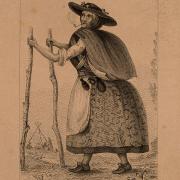

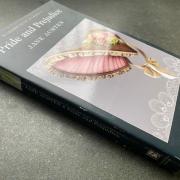

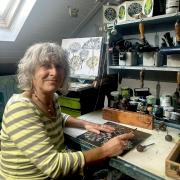

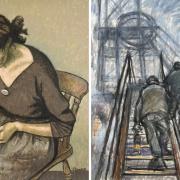

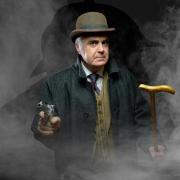
![Julie Carter [Jessie Leong]](/resources/images/128x89/1x/18534684.jpg)
![Julie Carter [Jessie Leong]](/resources/images/180x180/1x/18534684.jpg)

